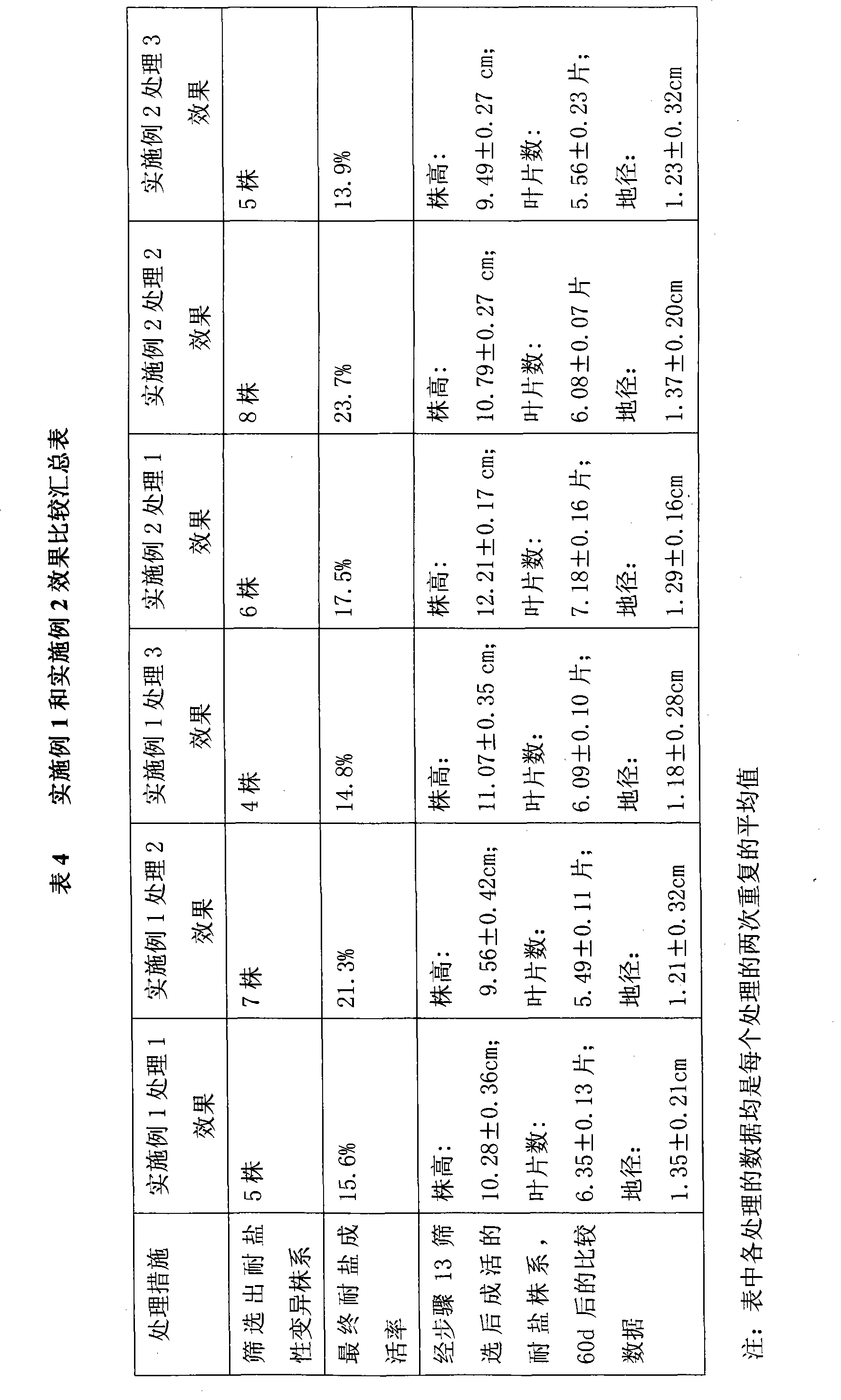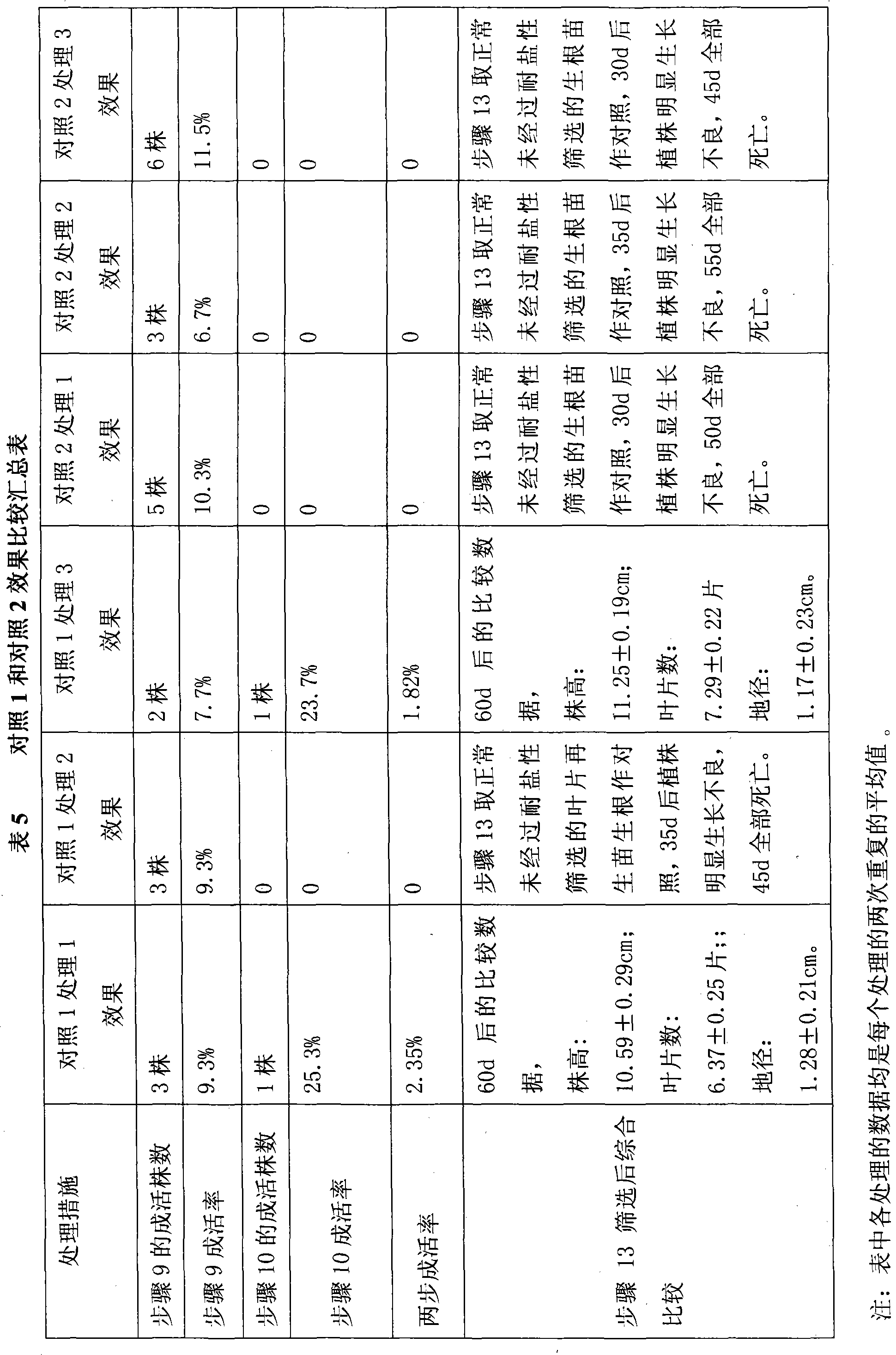China rose salt-resistance strain vitro quick-screening method
A screening method and salt-tolerant technology, applied in the field of agricultural biology, can solve the problems of soil salt stagnation, long breeding cycle of rose varieties, etc., and achieve the effects of good repeatability, increased mutation frequency and survival rate, and stable results.
- Summary
- Abstract
- Description
- Claims
- Application Information
AI Technical Summary
Problems solved by technology
Method used
Image
Examples
Embodiment 1
[0082] Example 1: In Vitro Rapid Screening of Salt-tolerant Strains of Rose Variety Versilia
[0083] The material used in this embodiment is Chinese rose variety Versilia (Versilia), and three treatments were performed, each treatment was repeated twice. Treatment 1 is carried out according to the following steps, treatment 2 and treatment 3 are the same as treatment 1 except for the measures listed in Table 1. Processing 1 is as follows:
[0084] 1. Selection and sterilization of the initial explants, select the year-old new shoots that grow robustly, have no damage by diseases and insect pests and virus symptoms, cut into stems containing (1 to 2) lateral buds in each section, cut off the leaves and put them in Soak in water with a small amount of washing powder for 5 minutes, rinse with tap water, and rinse with 0.2% mercuric chloride (HgCl 2 ) solution for 20 min, 2% sodium hypochlorite solution for 25 min, and after sterile water washing for 3 times, germination induct...
Embodiment 2
[0101] Embodiment 2: In vitro rapid screening of rose variety Tinete salt-tolerant strain
[0102] The material used in this embodiment is the Chinese rose variety Tinete. Except that the variety of the material used is different from that of Example 1, three treatments are also performed, and each treatment is repeated twice. Processing 1, processing 2, and processing 3 are the same as processing 1, processing 2, and processing 3 of Embodiment 1, and will not be repeated here.
[0103] Description of comparison settings
[0104] Control 1:
[0105] Above-mentioned implementation 1 and each treatment of implementation 2 all set 2 contrasts simultaneously, and the Chinese rose varieties used are also corresponding correspondingly, and contrast 1 is that the physical mutagenesis treatment of step 7 is not carried out, and the leaves induced by steps 5 and 6 are directly regenerated. Subsequent salt tolerance screening, the same treatment code represents except not 60 Except f...
PUM
 Login to View More
Login to View More Abstract
Description
Claims
Application Information
 Login to View More
Login to View More - R&D
- Intellectual Property
- Life Sciences
- Materials
- Tech Scout
- Unparalleled Data Quality
- Higher Quality Content
- 60% Fewer Hallucinations
Browse by: Latest US Patents, China's latest patents, Technical Efficacy Thesaurus, Application Domain, Technology Topic, Popular Technical Reports.
© 2025 PatSnap. All rights reserved.Legal|Privacy policy|Modern Slavery Act Transparency Statement|Sitemap|About US| Contact US: help@patsnap.com


